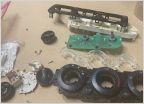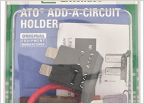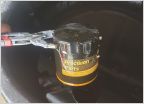-
Welcome to Tacoma World!
You are currently viewing as a guest! To get full-access, you need to register for a FREE account.
As a registered member, you’ll be able to:- Participate in all Tacoma discussion topics
- Communicate privately with other Tacoma owners from around the world
- Post your own photos in our Members Gallery
- Access all special features of the site
Nonstop P0430 Check Engine Light
Discussion in '2nd Gen. Tacomas (2005-2015)' started by socaloctacoma, Nov 25, 2024.


 Receiver Winch Install - Front and Rear
Receiver Winch Install - Front and Rear UJoints
UJoints Operation: hit ‘em with the blue lights
Operation: hit ‘em with the blue lights Help in the fuse box department...
Help in the fuse box department... 2nd Gen. 2012 Toyota Tacoma Model: GRN245L-PRADKA Specifications
2nd Gen. 2012 Toyota Tacoma Model: GRN245L-PRADKA Specifications Precision Parts brand at Toyota Dealership?!
Precision Parts brand at Toyota Dealership?!
